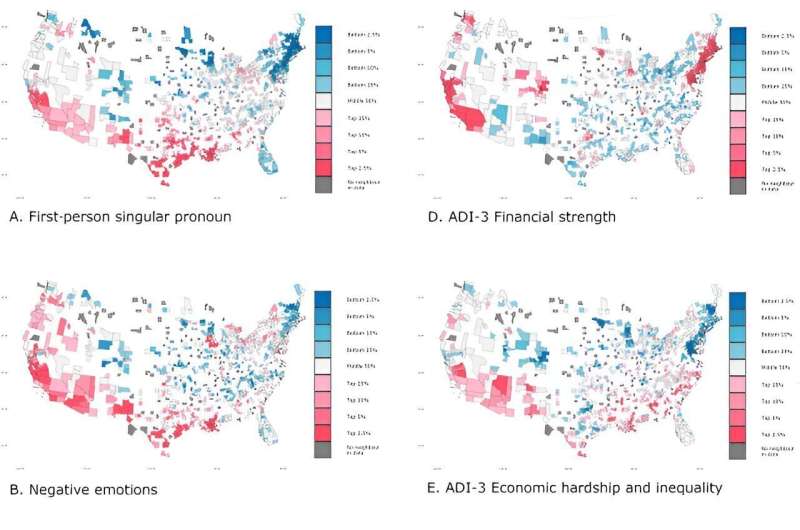This article has been reviewed according to Science X's editorial process and policies. Editors have highlighted the following attributes while ensuring the content's credibility:
fact-checked
trusted source
proofread
Social media can reveal who needs the most help

Language use in social media can be a useful tool for social scientists, because it reflects living conditions in areas the posts originate from.
"There is a correlation between social inequalities and language patterns in social media," says Associate Professor Lucas M. Bietti at NTNU's Department of Psychology.
Researchers studied 30 million X/Twitter posts from the United States. They compared the language used in the tweets to the living conditions in the counties from which the tweets were posted.
"How we use language reveals something about ourselves and the conditions in which we live," says Bietti.
He collaborated on this study with postdoctoral fellow Eric Mayor from the University of Basel. The results have now been published in the journal Heliyon.
Ethnic minorities are more prone to depression
"The language patterns reveal that, on average, people from ethnic minorities show clearer signs of depression and lower adaptability," says Associate Professor Bietti.
Lower adaptability is a term used to describe how people react to big changes, such as losing their jobs.
The researchers also found correlations between how rich or poor an area is and the proportion of ethnic minorities that show signs of depression and poor adaptability.
"The poorer an area is, and the larger the proportion of ethnic minorities, the clearer the language signs we find of depression and low adaptability in this area," says Bietti.
In general, many ethnic minorities in the United States have lower levels of education and lower income than the majority.
Reflecting reality
Bietti and Mayor have previously investigated the language used on X/Twitter in relation to the time of the week the messages are sent. That study showed that much more positive language is used in the afternoon than in the morning, which is the busiest time of day for most people.
Our emotions generally get stronger outside of office hours, and we like ourselves the most as the weekend approaches.
Seen collectively, social media posts reflect reality.
"Analyzing language patterns in social media posts is a useful method that can help us understand trends in mental health," says Bietti.
The method enables us to compare people's mood in a specific area at different times and over time.
"The method is particularly useful when public health data from an area are lacking or not good enough," says Bietti.
Among other things, the method can help us estimate the impact that significant events have on mental health.
"The indicators can show us where we should implement various health campaigns and social initiatives, especially in areas where living conditions are poorer than elsewhere," says Bietti.
More information: Eric Mayor et al, Language use on Twitter reflects social structure and social disparities, Heliyon (2023). DOI: 10.1016/j.heliyon.2023.e23528


















